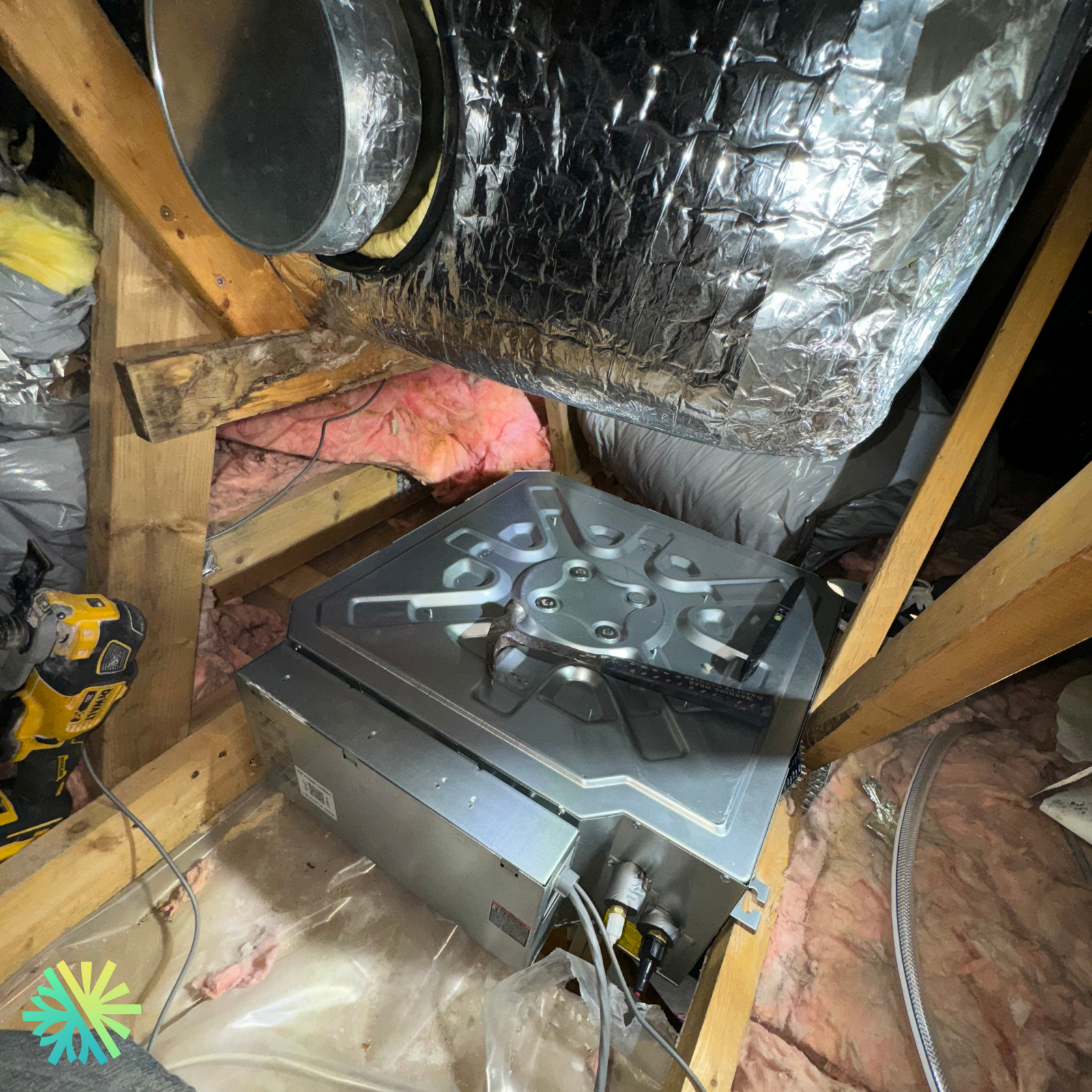Integrating a commercial air conditioning system into a building aiming for green certification such as LEED or BOMA BEST is both a strategic and technical challenge. At AirGreen, we fully understand the importance of this synergy between energy performance, climate comfort, and environmental sustainability. Our expertise in commercial HVAC across Montréal, Laval, Longueuil, the North Shore and the South Shore allows us to offer tailored solutions that meet the strict demands of these certifications.
Why integrate air conditioning into a green certification strategy?
The energy efficiency of a building is now a central concern for real estate developers, property managers, and responsible businesses. Certifications like LEED, BOMA BEST, or the WELL Building Standard reward buildings that meet high standards in energy consumption, indoor air quality, sustainable resource management, and carbon footprint reduction.
One of the fundamental pillars of these certifications is the air conditioning system. A poorly designed or ill-suited HVAC system can compromise the overall performance of a building and jeopardize its eligibility for certifications.
At AirGreen, we work hand in hand with architects, engineers, and sustainability firms to integrate smart HVAC solutions that are energy-efficient, quiet, and fully compatible with LEED or BOMA objectives.
Specific certification criteria: how does air conditioning factor in?
Energy savings and thermal efficiency
Certifications require the installation of high-efficiency commercial HVAC systems, including:
-
Inverter commercial HVAC units with a high SEER rating.
-
Multi-zone heat pumps allowing intelligent zone-by-zone control.
-
Technologies using low Global Warming Potential (GWP) refrigerants, such as R-32 or R-454B.
We favor brands like Fujitsu, Bosch, Goodman, and Tosot, which offer models aligned with today’s environmental standards.
Indoor air quality
Air conditioning goes beyond thermal comfort: it must ensure proper ventilation, humidity control, and high-efficiency filtration of fine particles and allergens.
LEED and WELL certifications impose strict standards on air quality: fresh air rates, MERV 13 or higher filtration, contaminant control.
Our installations include:
-
Heat Recovery Ventilation (HRV) or Energy Recovery Ventilation (ERV) systems.
-
Units with HEPA filters, CO2 sensors, and humidifiers.
Reducing environmental impact
We prioritize low-power HVAC equipment with long lifespans, recyclable components, and compatibility with renewable energy (e.g., hybrid HVAC systems or solar-ready units).
Case studies: AirGreen projects aligned with sustainable development
Medical complex in Laval – BOMA BEST Level 3 certification
For this project, we installed Daikin VRF systems powered by high-efficiency commercial heat pumps. The precise zone-by-zone control helped reduce air conditioning costs by 30%, while maintaining optimal comfort for healthcare professionals.
Challenges faced:
-
Existing building with limited ductwork space.
-
Strict ventilation and HEPA filtration requirements.
Solutions implemented:
-
Installation of high-capacity compact wall-mounted units.
-
HRV coupled with real-time air quality sensors.
Administrative office in Longueuil – On track for LEED Silver
We recommended installing a Bosch BOVA IDS Premium R-454B central heat pump system. This choice ensured compatibility with LEED HVAC efficiency requirements and the use of a low-GWP refrigerant.
Highlights:
-
Variable-speed unit with intelligent control.
-
Measured 35% reduction in energy consumption for heating and cooling.
-
Eligibility for green energy subsidies (LogisVert and other commercial incentives).
Our approach: expertise, customization, and full support
At AirGreen, each project is unique. Before making any recommendation, we carry out:
-
A comprehensive HVAC audit, including thermal readings, air quality assessments, and current performance evaluation.
-
A compliance analysis with the targeted certification’s criteria.
-
Energy modeling to predict savings and optimize system design.
We also assist our clients with technical documentation preparation required for certification (performance reports, equipment spec sheets, energy calculations, etc.).
What to avoid when pursuing green certification
-
Undersizing or oversizing HVAC units.
-
Installing systems incompatible with eco-friendly refrigerants.
-
Omitting heat recovery in continuously occupied buildings.
-
Neglecting HVAC maintenance, which is essential for long-term energy performance.
Why choose AirGreen for your certified HVAC project?
Our team brings deep expertise in commercial HVAC throughout Montréal, Laval, Longueuil, the North Shore, and the South Shore. Beyond our technical mastery, we stand out with our collaborative approach and ongoing commitment to environmental performance.
What we offer:
-
A range of energy-efficient commercial heat pumps.
-
Installations fully compliant with LEED, BOMA, and WELL standards.
-
End-to-end support, from the initial quote to final certification.
-
Reliable after-sales service to ensure long-term system performance.
Available grants and incentives
Several government and municipal programs are available to support businesses adopting sustainable HVAC solutions:
-
Hydro-Québec’s LogisVert program
-
Transition énergétique Québec
-
Municipal grants for eco-responsible commercial buildings
We handle eligibility assessments and prepare the necessary documentation so you can benefit fully from these financial aids.
Conclusion
Integrating a commercial air conditioning system into a green certification strategy isn’t a constraint—it’s an opportunity to optimize energy performance, occupant comfort, and property value. At AirGreen, we’re your trusted partner to meet this challenge with precision, know-how, and environmental dedication.

